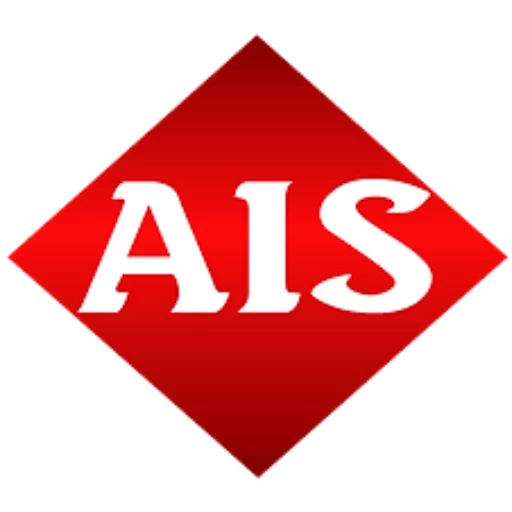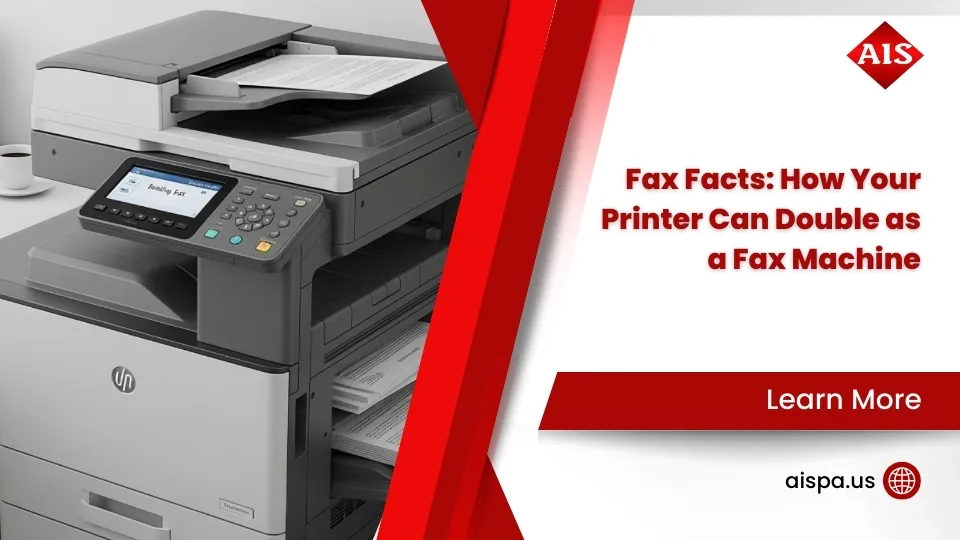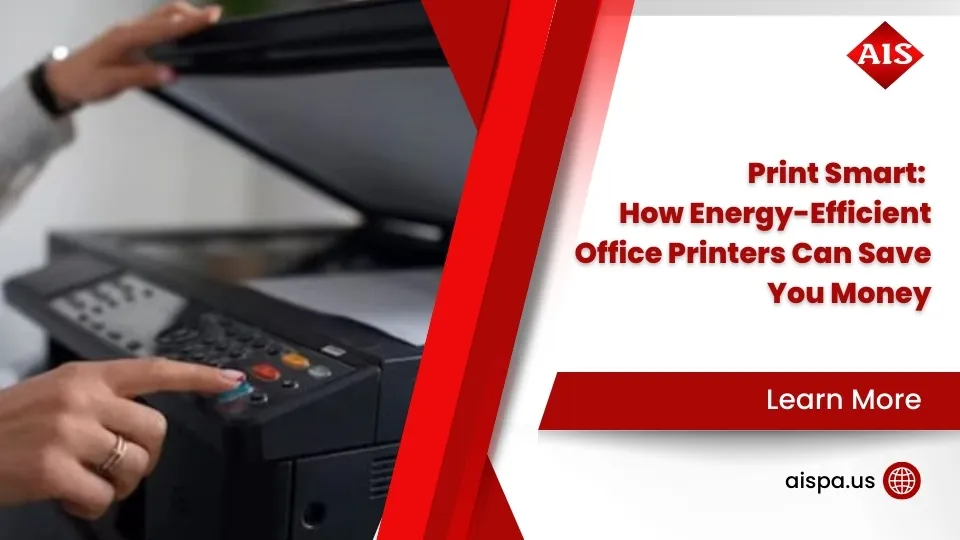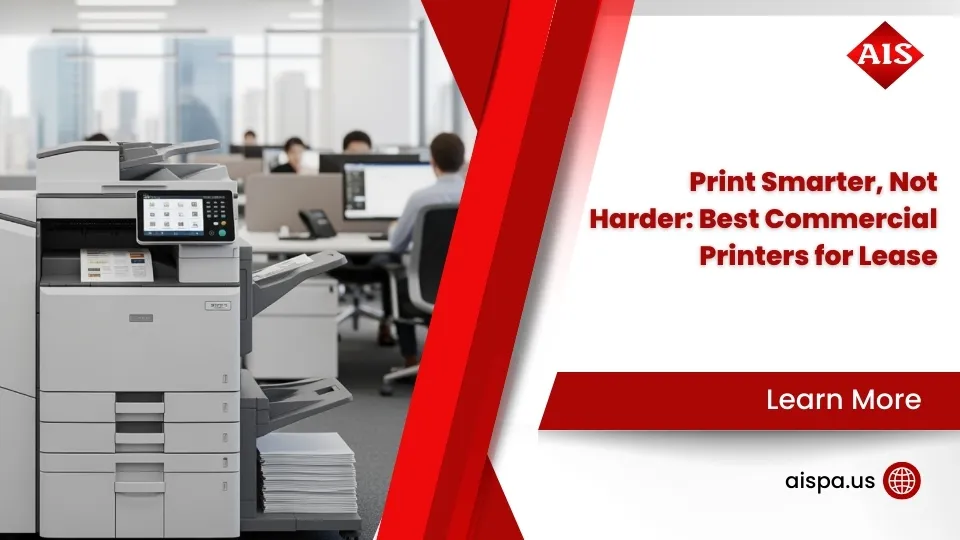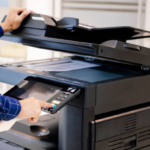Leaflets That Last: Best Paper Choices for Impactful Messaging
The best paper for leaflets depends on your budget, distribution method, and desired impact – but most businesses find success with 150 gsm silk or gloss paper for the perfect balance of durability and professional feel.
Quick Reference for Leaflet Paper Selection:
- Budget leaflets (mass distribution): 130-170 gsm uncoated or matte
- Standard business leaflets: 150 gsm silk finish (most popular choice)
- Premium marketing materials: 200-250 gsm gloss or silk
- Eco-friendly options: FSC-certified recycled stock, 130-170 gsm
- Outdoor/weather resistant: Waterproof synthetic papers like Nevertear
Your leaflet’s paper choice directly impacts how customers perceive your brand. Research shows that 48% of consumers who received a leaflet ultimately made a purchase – but only when the paper quality matched their expectations.
Think about it: when someone picks up your leaflet, they’re forming an instant judgment about your business based on how it feels in their hands. A flimsy 90 gsm sheet suggests corner-cutting, while an overly thick 350 gsm card feels wasteful and expensive to mail.
Paper weight isn’t the only factor. The finish matters too. Glossy paper makes photos pop but creates glare under office lighting. Matte finishes look sophisticated but can appear dull. Silk paper splits the difference – offering vibrant colors without the harsh shine.
The technical details matter for practical reasons as well. Papers with brightness ratings between 88-96% ensure crisp, vibrant printing. Proper weight selection prevents show-through (text bleeding from one side to the other) and ensures your leaflets survive folding without cracking.

Why Paper Choice Matters for Leaflets
Your leaflet isn’t just a piece of paper – it’s your brand’s first handshake with potential customers. Before anyone reads your carefully crafted message, they’re already forming opinions based on how your leaflet feels between their fingers.
The psychology behind this is remarkable. When someone picks up a leaflet made from quality paper, their brain instantly associates that tactile experience with your business. A flimsy 90 gsm sheet suggests you cut corners everywhere. But a substantial 150 gsm leaflet? That tells people you care about details and quality.
Paper brightness plays a crucial role too. The best paper for leaflets typically has brightness levels between 88-96%. This range ensures your colors pop without looking artificially harsh. Drop below 88% and your leaflet appears dull and unprofessional. Go above 96% and you risk that stark, hospital-white look that makes people squint.
Show-through becomes a real problem with lighter papers. Nobody wants to see ghostly text bleeding through from the back page. Proper paper weight eliminates this issue entirely, keeping your message clean and readable.
Folding integrity matters more than you might think. Ever tried to fold heavy cardstock into a tri-fold brochure? It cracks, it fights back, and it looks terrible. Types of Paper for Printing covers the technical details, but the practical lesson is simple: match your paper weight to your design.
Emotional & Practical Impact
Touch research reveals something fascinating about human behavior. When people handle quality materials, they unconsciously transfer those positive feelings to the brand behind them. A soft-touch coating can make your leaflet feel almost fabric-like. A crisp, smooth finish suggests precision and professionalism.
Reader engagement increases significantly when the physical experience matches the visual design. Think about luxury hotel brochures – they don’t just look expensive, they feel expensive. That’s intentional sensory branding at work.
Postal regulations set minimum thickness requirements for certain mail pieces. Your beautiful leaflet won’t reach customers if it doesn’t meet postal standards. Standard postcards need at least .007 inches thickness to qualify for postcard rates.
Cost vs. Quality Balance
Smart businesses understand that paper choice directly impacts both production costs and campaign effectiveness. Going too cheap creates problems – thin paper tears easily, gets damaged by moisture, and makes your business look unreliable.
But going overboard backfires too. Heavy cover stocks might feel impressive, but they’re overkill for most leaflet applications and could double your postage expenses for bulk mailings.
The sweet spot for most applications sits between 130-170 gsm. This range delivers professional feel, excellent print quality, durability for handling, and reasonable mailing costs. It’s the Goldilocks zone of leaflet papers – not too light, not too heavy, but just right.
Best Paper for Leaflets: Weights, Finishes & Stocks
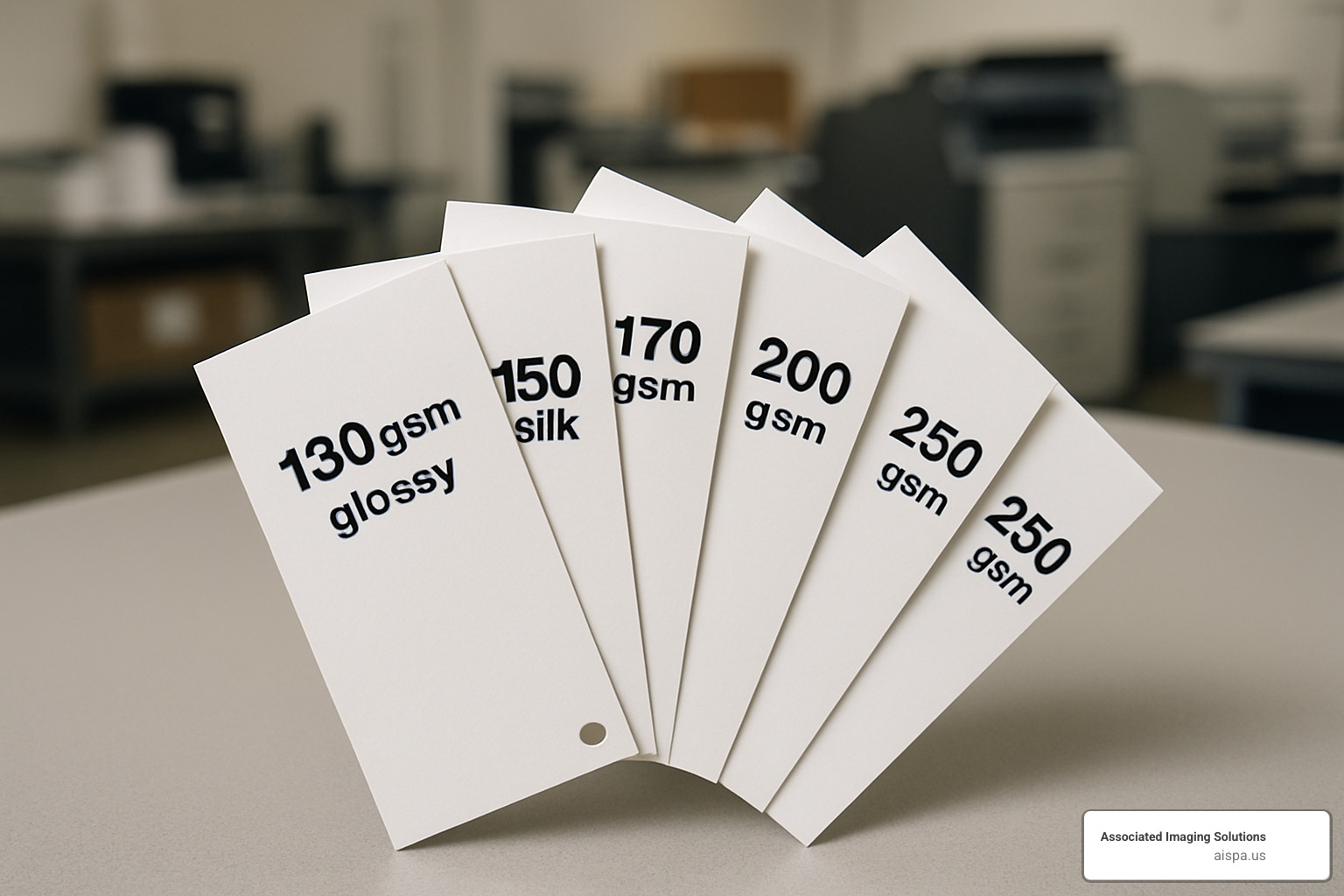
Finding the best paper for leaflets means understanding three crucial elements that work together: weight (measured in GSM), finish (the surface coating), and stock type (the base paper material).
Most businesses automatically reach for glossy 150 gsm paper because it sounds professional and looks shiny. While this combination works well for many situations, sometimes you need something lighter for mass distribution, heavier for premium impact, or different finishes to match your message.
The GSM scale tells you how thick and substantial your leaflet will feel. 90-120 gsm works perfectly for bulk mailers and newspaper inserts where cost matters most. 130-170 gsm hits the sweet spot for standard business leaflets – professional enough to impress without breaking your budget. 170-200 gsm enters premium territory where every leaflet feels substantial and valuable. Papers weighing 250 gsm or more create luxury impressions but become challenging to fold and expensive to mail.
| GSM Range | Best For | Feel | Cost |
|---|---|---|---|
| 90-120 gsm | Bulk mailers, inserts | Lightweight, basic | Lowest |
| 130-170 gsm | Standard leaflets, flyers | Professional, durable | Moderate |
| 170-200 gsm | Premium handouts, covers | Substantial, quality | Higher |
| 200-250 gsm | Luxury brochures, invitations | Rigid, impressive | Premium |
| 250+ gsm | Business cards, postcards | Board-like, luxury | Highest |
Choosing the best paper for leaflets by weight (GSM)
90-120 GSM papers serve as your budget champions for high-volume campaigns where every penny counts. These weights include standard office paper (around 80-100 gsm) and slightly heavier stocks perfect for door drops and mass mailings. The trade-off is obvious – anything below 130 gsm risks looking cheap and tears easily when handled roughly.
130-170 GSM represents the goldilocks zone where most businesses find their perfect match. A 150 gsm leaflet feels substantial in your hands without adding bulk to your mail bag. It folds cleanly without cracking along the edges and provides excellent print quality that makes colors pop.
170-200 GSM moves into premium territory where your leaflets start making serious first impressions. This weight sits perfectly between regular paper and card stock, giving your materials a quality feel that suggests expensive products or professional services. The downside? Folding becomes trickier, and your postage costs start climbing.
200-250 GSM and beyond creates immediate luxury impact that demands attention. When someone picks up a 250 gsm leaflet, they know instantly that you’ve invested in quality. However, these weights come with practical challenges – folding multiple panels becomes difficult or impossible, and mailing costs can double compared to standard weights.
Selecting the best paper for leaflets by finish – gloss vs. silk vs. matte
Gloss finish delivers maximum visual punch when you need photographs to jump off the page. Colors appear more vibrant, images look sharper, and everything seems more professional. The catch? Bright lights create annoying glare, and writing on glossy surfaces with regular pens becomes nearly impossible.
Gloss works brilliantly for image-heavy leaflets, product catalogs, event promotions featuring photography, and retail applications where visual appeal drives purchasing decisions.
Silk finish has earned its reputation as the popular middle ground for good reasons. It combines the color vibrancy of gloss with the readability of matte, creating a fabric-like texture that feels premium without being pretentious. Silk eliminates those annoying glare issues while maintaining excellent color reproduction.
This finish consistently ranks as the most popular choice because it provides excellent color reproduction, eliminates glare problems, feels premium without seeming wasteful, and works beautifully for mixed text and image content.
Matte finish creates sophisticated simplicity that appeals to modern, minimalist brands. It’s easy on the eyes, perfect for text-heavy content, and gives your leaflets a professional, understated elegance. Some matte papers even allow writing with certain pens, making them interactive during meetings or presentations.
Paper Types for Printing explores these finishes and their specific printing requirements in greater detail.
Pros & cons of uncoated and recycled options
Uncoated paper offers sophisticated, modest appeal that resonates particularly well with environmentally conscious audiences. The practical benefits include easy writing during meetings, no glare under bright lighting, eco-friendly perception, and lower costs than coated alternatives. However, colors appear less vibrant than on coated papers, and photo reproduction quality suffers.
Recycled paper combines environmental responsibility with professional appearance. Modern recycled stocks have overcome the gray, rough texture problems that plagued earlier generations. FSC-certified recycled papers prove you can demonstrate environmental responsibility without sacrificing quality.
The environmental benefits are significant – recycled paper fibers can be reused up to six times before becoming unusable. The trade-offs include slightly higher costs compared to virgin stock and potentially less vibrant color reproduction on some recycled grades.
Best Printer Paper for Quality and Sustainability explores these environmentally friendly options and their performance characteristics in much greater detail.
Matching Paper to Purpose, Audience & Budget

A5 (148 x 210mm) dominates the market because it hits that sweet spot – big enough to showcase your message without overwhelming people’s hands or mailboxes. But choosing the best paper for leaflets goes way beyond size. Your paper needs to work with your distribution method, speak to your specific audience, and fit your budget without compromising your brand image.
A4 (210 x 297 mm) gives you maximum space for detailed information but can feel overwhelming for simple promotions. A6 (105 x 148 mm) keeps costs down and fits perfectly in pockets. DL size (99 x 210 mm) works beautifully for restaurant menus and price lists.
Folding options change everything about your paper requirements. A simple half-fold leaflet can handle heavier paper weights up to 200 gsm, while Z-fold or roll-fold designs demand lighter stocks around 130-150 gsm maximum.
Targeted Recommendations for Specific Scenarios
Door-drop campaigns need to survive the journey from your printer to someone’s kitchen table. We recommend 130-170 gsm uncoated or matte paper because it feels substantial without breaking your budget. Skip the glossy finishes here – they show every fingerprint and scratch from handling.
Trade show handouts face different challenges. Attendees carry these materials in bags all day, walking miles across convention floors. 150-200 gsm silk paper provides that premium feel without adding unnecessary weight.
Restaurant menus and price lists get handled constantly throughout the day. 170-200 gsm paper with matte or silk finish stands up to frequent use while hiding fingerprints and minor spills. DL size works perfectly for these applications.
Event invitations deserve special treatment because they represent special occasions. 200-250 gsm silk or matte stock creates that substantial feel that makes people think “this must be important.”
Outdoor promotions present unique challenges that most people don’t consider. Regular paper dissolves in rain and tears in wind. Waterproof synthetic papers like Nevertear cost more upfront but eliminate the waste and frustration of weather-damaged materials.
Cost, Perceived Value & ROI
That 150 gsm silk leaflet might cost 20% more than basic uncoated paper, but it often increases response rates by 30% or more. People associate paper quality with business quality – fairly or not.
Economy options (90-120 gsm uncoated) work for pure information distribution where cost trumps impression. Standard weights (130-170 gsm silk or matte) provide the best balance for most businesses. Premium options (170-200 gsm gloss or silk) justify their cost when you need to make strong first impressions.
Volume discounts can dramatically affect your paper choice. Ordering 10,000 leaflets instead of 1,000 can reduce per-unit costs by 40-60%. Suddenly, that premium silk finish becomes affordable when you’re printing larger quantities.
Sustainability premiums deserve consideration too. FSC-certified and recycled papers typically cost 10-15% more, but they resonate strongly with environmentally conscious customers.
Choose Right Printer Paper Types offers additional guidance on balancing these cost and quality considerations for your specific situation.
Avoiding Mistakes & Testing Before You Print

Picture this: You’ve just spent your entire quarterly marketing budget printing 50,000 leaflets, only to find they’re too thick to fold properly and cost double to mail. We’ve watched this nightmare scenario unfold more times than we’d like to admit.
Choosing the best paper for leaflets isn’t just about picking something that looks good online. Paper behaves differently under real-world conditions, and what seems perfect on screen might be a disaster in your hands.
Smart businesses test first, print later. Most paper suppliers will send you sample books or individual sheets for testing. Yes, it takes a few extra days, but it’s nothing compared to the cost of reprinting your entire campaign.

Common Pitfalls When Selecting the best paper for leaflets
The “Heavier Must Be Better” Trap
Business owners assume 350 gsm paper will make their leaflets look more professional. Then reality hits: the paper won’t fold without cracking, it costs a fortune to mail, and customers think you’re wastefully expensive. Most leaflets work beautifully with 130-170 gsm stock – anything heavier usually creates more problems than it solves.
Grain Direction Disasters
Paper has a grain direction, just like wood. Fold against the grain and you’ll get rough, ugly creases that scream “amateur hour.” Professional printers know this, but it’s worth discussing if you’re planning complex fold patterns.
Postal Regulation Nightmares
Nothing kills a direct mail campaign like finding your leaflets don’t meet postal requirements. Postcards need at least .007 inches thickness to qualify for postcard rates. Always check postal regulations before finalizing your paper choice.
The Wrong Coating Choice
Glossy paper photographs beautifully, but try reading it under office fluorescent lights and you’ll understand why silk finishes exist. If people need to take notes on your leaflets or they’ll be viewed under bright lighting, matte or silk finishes work much better than high-gloss options.
Ignoring Mother Nature
Planning outdoor distribution? Regular paper turns to mush in rain and fades in sunlight. Waterproof synthetic papers cost more upfront but eliminate weather-related waste completely.
How to Test & Approve Your Leaflet Paper
Print Real Samples with Your Actual Design
Never trust how paper looks blank. Colors behave completely differently on various stocks. Print a few test pieces using your exact artwork and colors before committing to thousands.
Test Everything People Will Actually Do
Will recipients write on your leaflets? Test different pens. Planning to fold them? Fold your samples multiple times to check for cracking. Going in event bags? Stuff them in bags and see how they handle real-world treatment.
Simulate Real Lighting Conditions
That gorgeous glossy leaflet might be unreadable under the fluorescent lights where your customers work. Test your samples under various lighting conditions – office lights, outdoor sunlight, evening indoor lighting.
Copy Paper vs Printer Paper explains additional testing considerations that can help you avoid costly mistakes and choose the perfect paper for your specific needs.
Frequently Asked Questions about Leaflet Paper
What GSM is most versatile for everyday leaflets?
150 gsm silk paper wins hands down for most business leaflets. It strikes that perfect balance – substantial enough to feel professional in someone’s hands, yet light enough to keep mailing costs reasonable. Think of it as the “goldilocks” choice that’s just right for most situations.
This weight is exactly twice as thick as the paper in your office printer, which immediately signals quality without screaming “expensive.” It folds cleanly without cracking, handles normal wear and tear beautifully, and prints vibrant colors that make your message pop.
If budget is tight, 130 gsm uncoated offers solid value while still looking professional. When you want to impress, bump up to 200 gsm silk or gloss for that premium feel. Just avoid anything below 130 gsm for business use – the few pennies you save per leaflet will cost you credibility.
The beauty of 150 gsm is its versatility. Whether you’re handing out leaflets at trade shows, dropping them through letterboxes, or leaving them on reception desks, this weight performs consistently well across different situations.
When should I choose a glossy finish instead of matte or silk?
Choose gloss when your leaflet needs to grab attention from across the room. Glossy paper delivers the most vibrant colors and razor-sharp image quality – it’s like the difference between watching TV in standard definition versus 4K.
Gloss shines (literally) when you’re showcasing products with detailed photography, promoting events with stunning venue shots, or creating retail materials where visual appeal drives sales. Restaurant menus featuring mouth-watering food photos? Gloss makes everything look more appetizing.
But here’s where gloss becomes problematic: office environments with fluorescent lighting create annoying glare that makes text hard to read. If people need to jot notes on your leaflet during meetings, forget about it – most pens won’t write properly on glossy surfaces.
The rule of thumb? If images matter more than text, go glossy. If readability and functionality matter most, stick with silk or matte finishes. Your audience and distribution environment should guide this decision more than personal preference.
Are recycled papers durable enough for outdoor distribution?
Modern recycled papers have come a long way from the gray, rough stuff you might remember. FSC-certified recycled stocks now offer impressive quality and durability for most indoor applications. They’re perfect for office handouts, trade show materials, and door-to-door campaigns where weather isn’t a factor.
However, recycled papers do have limitations outdoors. They absorb moisture more readily than coated papers, which means they can get soggy and fall apart in rain or high humidity. If you’re planning outdoor distribution, you’ll need extra protection.
For weather resistance with environmental responsibility, consider coated recycled stocks with protective finishes or waterproof synthetic papers like Nevertear. These options cost more upfront but eliminate waste from weather-damaged leaflets – which actually makes them more environmentally friendly in the long run.
The environmental benefits are real and significant. Recycled paper fibers can be reused up to six times, and many customers appreciate businesses that make sustainable choices. Just match your paper choice to your distribution environment for the best paper for leaflets that serves both your message and your values.
Conclusion
Choosing the best paper for leaflets doesn’t have to feel overwhelming once you understand the basics. Think of it like picking the right outfit for an occasion – you wouldn’t wear a tuxedo to the beach or flip-flops to a wedding. Your leaflet’s paper should match its purpose.
Most businesses find that 150 gsm silk paper hits the sweet spot perfectly. It feels substantial without breaking the budget, prints beautifully, and survives the journey from your hands to your customer’s. But remember, “most businesses” might not include yours if you’re planning something special.
Here’s what really matters: match your paper weight to how you’ll distribute your leaflets. Door-dropping thousands? Stick with lighter, cost-effective options. Handing them out at a luxury trade show? Go premium. Choose finishes based on your content – glossy for stunning photos, matte for easy reading, silk for the best of both worlds.
The 48% purchase statistic we mentioned earlier isn’t just a number – it represents real customers making real buying decisions. But here’s the catch: they only bought when the paper quality matched their expectations of the brand. A flimsy leaflet advertising premium services sends mixed messages that confuse potential customers.
Testing saves money and embarrassment. Order samples, print mock-ups, and actually handle them like your customers will. Fold them, write on them if needed, and check how they look under different lighting. This small step prevents expensive mistakes that can derail entire campaigns.
Your leaflet often provides the first physical connection between your business and potential customers. That moment when someone picks it up and feels the paper quality? That’s when they start forming opinions about your attention to detail, your professionalism, and whether you’re worth their time.
At Associated Imaging Solutions, we’ve seen how the right printing equipment transforms good paper choices into exceptional results. Our copiers and printers across Pennsylvania handle everything from budget-friendly bulk runs to premium specialty stocks. We understand that great leaflets need great printing technology to reach their full potential.
Whether you’re a small business in Philadelphia planning your first leaflet campaign or a growing company in Pittsburgh ready for a major direct mail push, our managed print services help you get the most from whatever paper you choose. Contact our copiers & printers team to discuss how we can help turn your paper insights into impressive printed reality.
Your message deserves paper that does it justice. Choose thoughtfully, test thoroughly, and print with confidence knowing you’ve made the right decision for your business and your customers.
